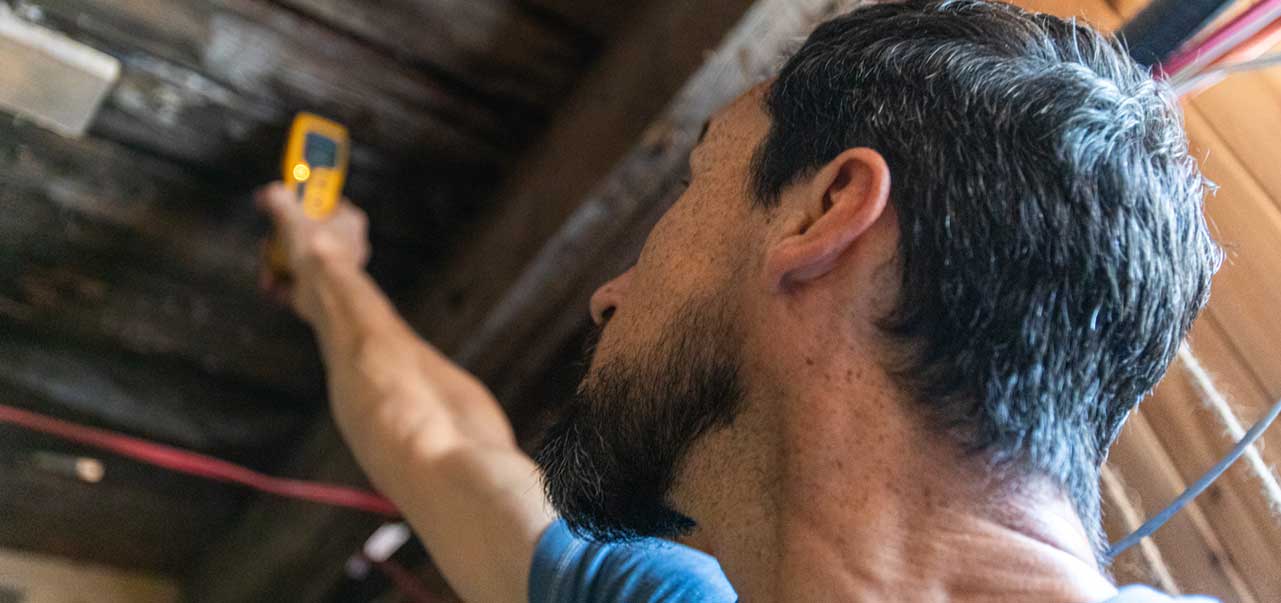Be prepared with a building inspection

When buying a home, there is a lot going on. You've looked at a few different properties, each with their own unique pros and cons. You've looked into your finances and home loan options, which brings its own learning curve. A building inspection on the property you're buying, completed by a registered builder, will give you some reassurance that the home is structurally sound.
It may also provide you with an opportunity to get some issues looked at and fixed before you purchase your home. Or maybe even some bargaining power when finalising your purchase price!
Keystart may require a satisfactory structural or building report from a registered builder, structural Engineer or structural surveyor dependent on the information contained in your valuation report. However even if you're not required to have one, getting a detailed building and pest inspection can be a clever move when you choosing your new home.
Who should do the inspection?
To get an accurate report, it's important that a building inspection is done by an independent and qualified inspector. Keystart recommends building inspections be conducted by a registered builder, structural engineer or structural surveyor. You can always ask an inspection company for the credentials of your inspector before you arrange the inspection.
You will be paying for the inspection yourself, but you'll be going into your home purchase with your eyes open.
So what should you look for in a building inspection?
The inspector will look for:
- structural issues in the home, and
- any areas of the home that are unsafe.
For example, it might highlight the presence of asbestos and other dangerous materials, or pinpoint missing balustrades and cracks in walls or swimming pool fencing issues.
You have an option to include quotes and recommendations for things that need to be fixed. This gives you the knowledge to weigh up your and make sure that buying the house won't put you in a difficult financial situation.
What's not included?
Building inspectors cannot comment on what they cannot see. Inspectors can't assess areas that are not accessible or are obstructed, for example:
- large, heavy furniture that can't be easily moved,
- issues inside walls and ceilings may not be accessible, and
- some areas such as electrical wiring and plumbing may not be able to be assessed.
Now it's your turn!
When you go through the home, either before you make an offer or during your final inspection, keep a list of items or anything that concerns you. You may want to take someone with you (and a notebook) to help you keep track.
We've put together a checklist to help you with your final house inspection
- Turn on and off every light to check the wiring is working.
- Ask if any appliances come with the home. If a dishwasher or a washing machine is built into cabinets, you may be able to get those included in the sale.
- Check if any garden features or sheds and structures come with the property – or perhaps there is debris in the backyard that you would like removed.
- Turn on and off each tap and flush each toilet.
Before settlement, you need to do a comprehensive final and very thorough check. Take someone with you to make sure you leave no stone unturned.
Here are all the potential issues you should check for:
Water pressure and drainage. Go through and flush all the toilets and run all the taps, including the shower and bath, to check for leaks, low pressure, or poor drainage.
Windows and doors. Hold your hands around the edges of the windows and doors to check for draughts. Also, open and close all windows and flyscreens to make sure all the windows function properly.
Flooring. Take your shoes off and walk on all the floors, checking for bumps, warping, or uneven spots. These could be the sign of a problem. Check how the carpets feel – plush or worn? Look around the edges where the flooring meets the walls – are any mistakes or messes being cleverly covered?
Electric check. As you go through the house checking the taps, you can also check the electricity. Turn each switch on and off to make sure it works. Also, bring in a small device like a small fan or your phone charger to test each outlet. If the outlet works, it will turn on the fan or start charging your phone immediately.
Cupboards. Open and close all the cupboards and drawers in the kitchen, laundry room, and bathroom. Check for any issues as well as strange odours that could signal poor ventilation or mould growth.
Walls and paint. Often, homes are given a fresh coat of paint before going on the market. Take a look at the paint job, paying particular attention to corners, borders, and window frames. If there are any mistakes, you can ask for them to be corrected.
Outdoors. Walk around the outdoors looking for any aesthetic issues that need to be addressed. Your building inspector should have spotted major issues but it's still a good idea to do a final check in the outdoor living space.
Now you'll be better prepared for what lies ahead!


